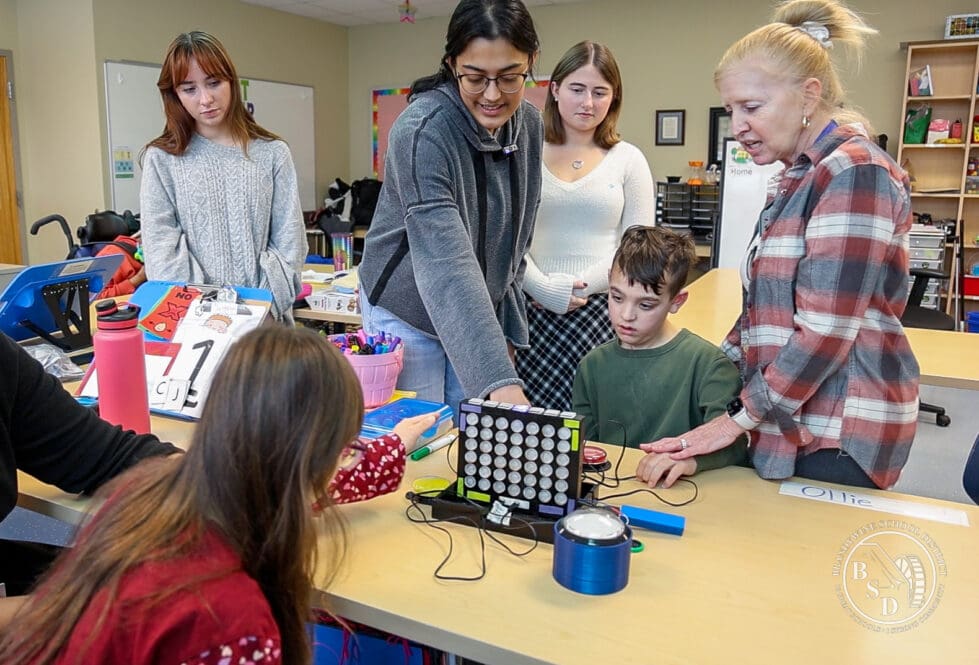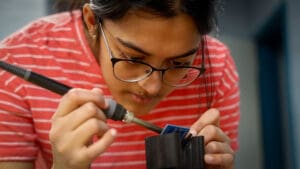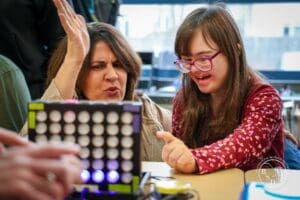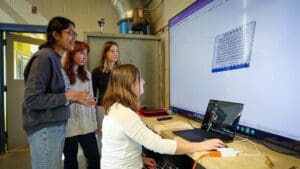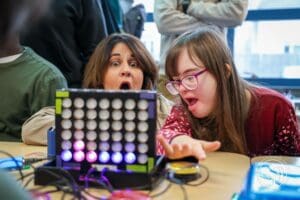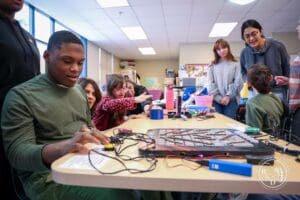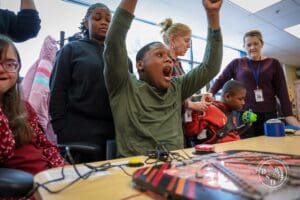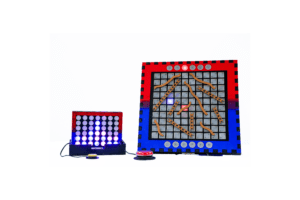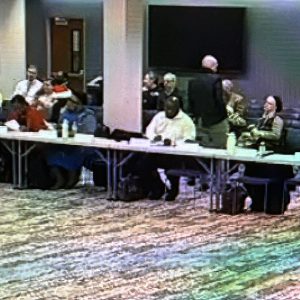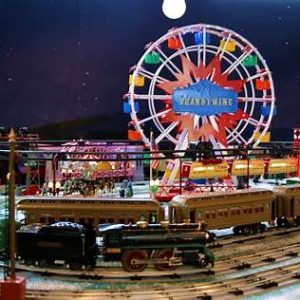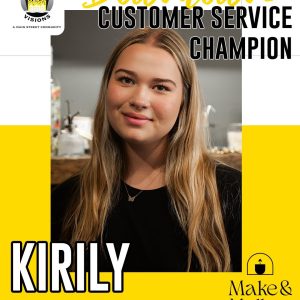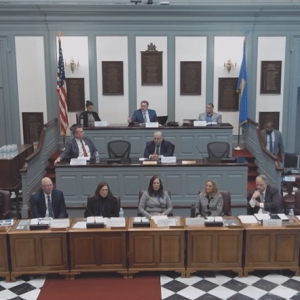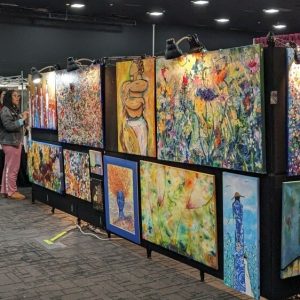
A team of four girls from Brandywine High won a national competition for their specially-designed games meant for students, and adults, with disabilities. (All photos courtesy of Brandywine School District)
Four Brandywine High School students have won $125,000 for their district by creating computer versions of popular games for students with disabilities.
They’ve been surprised and pleased to discover that their team project has been embraced by the wider community.
“We’re already getting requests from teachers,” said Isabella Chermak, a senior at Brandywine High School, “and not just teachers, schools outside of our district as well.”
In addition, assisted living facilities have asked for the games, expanding the impact from children to people of all ages.
Chermak and classmates Malti John, Olivia Erskine and Katherine McDerby won first place in the 14th annual national Samsung Solve for Tomorrow competition April 30 with their games.
A different team from Brandywine High took home the top national prize last year for an affordable alternative to assistive-tech devices for people with independent living disabilities.
The competition is for any STEM-related products, John said.
Creations don’t have to be related to helping people with disabilities or disadvantages, but keeping that the focus was rewarding for this year’s team.
- Screenshot
- Screenshot
“It’s really exciting because games are something I love to do, I love to play a lot of board games,” John said. “So being able to make those games and have people who are actually able to interact with those games and be able to experience the same things I’ve experienced and have that amount of joy, it was really incredible seeing all these students.”
The team created alternatives to the popular games “Connect 4” and “Chutes and Ladders.”
They designed their games to be controlled by adaptive and interchangeable buttons, adding audiovisual feedback and color schemes that make it easier for the visually impaired or colorblind to see.
For example, in Chutes and Ladders, the specially-designed game uses two button inputs on one side and two button inputs on the other side, so it’s a two player game.
“One of the buttons you use to roll a dice and it’s kind of like a virtual dice, there’s tiles on the board from one to six,” John said. “You click a button, it’ll roll that dice, and you’ll have a number appear.”
The next button is to move a game element throughout the board.
“We didn’t have to go through any copyright policies, but if we are selling these games, we cannot use their copyrighted names,” John said, “so we would use something like ‘Snakes and Ladders’ and ‘Four-in-a-Row’.”
Created with a computer-aided design (CAD) program along with 3D printers and laser cutters, the games were meant to have a small carbon footprint.
Using retail prices and factoring in the cost of labor, John said the games come to $83.91 with the plan to sell them for $150 each.
“Once we scale up to mass-manufacturing, all these prices decrease,” she said.
No games have been sold yet, mostly because the legalities of it aren’t completely fleshed out at this point, but once they figure that out, the team plans to put them on the market.
“My favorite part was definitely going to all these different testing locations and testing with people,” Chermak said. That included elementary and middle schools.
“We also tested in a facility where they had people who were older and had disabilities, and it was an incredible experience,” she said.
Seeing peoples’ eyes light up when they play the games was extremely fun for John, who called it a heart-warming experience.
Chermak said it means a lot to know that the team’s engineering, tools and skills are used to help and support people in their community.
John pointed out that their engineering class chose a project for the community after talking with “clients.” In their case, it was special education teachers.
“They talked us through some of the challenges,” she said, “and one of the big ones was social interactions with their students and just the lack of play.”
The Brandywine team had about four iterations of their games, made with different materials, with the goal of creating a sustainable and affordable product.
“We would like to move to a mass production where we would create injection molds of our games and have recyclable plastics,” Chermak said, “instead of just having the laser-cut wood and then gluing it together.”
The games were selected not only because they’re popular but because they aren’t too strategic – meaning people from all ages can enjoy them without stress.
They coded the games to help players follow the rules.
“So if someone presses a button out of turn, the board will not respond unless they’re playing it in turn,” John said. “If they press the button too many times, like they try to exceed the number of spots, it won’t let them.”
The games are coded for right answers and an end goal, John said.
Brandywine High is one three national winners, and the girls on the team brought home a $100,000 prize. They also won the new Rising Entrepreneurship Award, cashing them an additional $25,000.
That money will all go towards the school, paying for Samsung products and student resources and materials for the Brandywine district.
Chermak is heading to Pratt Institute to study architecture.
John, on her way to Stanford University to study computer science, joked that her future will involve “engineering stuff, solving problems. There’s a lot to do.”
She said it’s a little sad to be graduating when the team could do so much with their games.
“It feels like we’re losing out on making it a huge thing,” she said.
Even so, they’re happy to pass the torch onto the next group of innovators at Brandywine High.
RELATED STORIES:

Raised in Doylestown, Pennsylvania, Jarek earned a B.A. in journalism and a B.A. in political science from Temple University in 2021. After running CNN’s Michael Smerconish’s YouTube channel, Jarek became a reporter for the Bucks County Herald before joining Delaware LIVE News.
Jarek can be reached by email at jarek@delawarelive.com or by phone at (215) 450-9982. Follow him on Twitter @jarekrutz and on LinkedIn.
Share this Post


